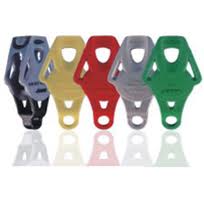PolyJet 3D Printing Explained
At Additive Manufacturing, our goal when “printing” parts using the PolyJet printing process and PolyJet Green Fire. Polyjet 3D printing is an additive manufacturing process we use to create a wide range of models, production prototypes, and master patterns that can be used to cast urethane parts and many others. Ultra-fine Layers One of the biggest advantages of PolyJet printing is the ability to print ultra-fine layers. In fact, with the appropriate 3D printer, it is possible to lay down layer resolutions as thin as 16μm. In turn, this ability results in more accurate results. Using this process, we can deliver highly accurate prototypes that are perfect for use in checking for form, fit, and appearance. Before the advent of PolyJet Green Fire, the parts produced were specifically for use in evaluating the concept and design. Green Fire is far more rigid, making it possible for the parts we manufacture to be functional as well as beautiful in appearance. When laid down in 16μm layers this amazing material offers high impact strength that it offers properties that are very similar to most functional thermoplastics. How Does PolyJet Printing Work? The PolyJet 3D printer functions in much the same way as the standard inkjet printer. The main difference is that instead of using drops of ink to create a 2-dimensional image, the printer uses ultra-fine drops of a photopolymer such as PolyJet Green Fire. Photopolymer is a very special type of polymer that becomes hard when it is exposed to ultraviolet light. Each time a fresh layer of the polymer is laid down, it is exposed to UV light fusing it to the previous layer and hardening it at the same time. This process continues until the desired part is finished. While Green Fire is used to create rigid parts, other materials can be used if you require parts with more flexibility. When using PolyJet printing, it is possible to add other materials to create a variety of finished materials with unique properties and colors. PolyJet Green Fire is green in color, which makes it easier for you to create rigid parts with more contrast. In turn, this makes it possible for you to see the various design aspects of the finished product. Removable Support When printing parts that feature complex geometries, the printer also jets in a gel-like material that is used to create support for the structure. Once the part is complete, the gel can be quickly removed using a water jet. While this does mean putting the part through a secondary process, the results are worth the extra step. PolyJet printing is most commonly recommended for smaller parts where a focus on detail, accuracy, and an exceptional surface finish is required. This could include, master patterns, presentation models, prototypes for medical devices, presentation models, and numerous other items. If you are interested in ordering parts made using the Polyjet 3D printing process for your next project, contact Additive Manufacturing, LLC at (877) 238-7907. We will work with our R&D team to replicate their designs and provide you with superior quality parts that meet and exceed your expectations.

